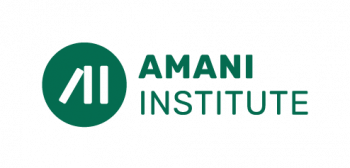We are excited to announce that our Alumni community has selected 18 representatives and curators: generous, enthusiastic leaders who stepped up to catalyze the next phase of Amani’s community growth and shape their regional circles, spread across the entire globe. Please meet the 2021 Amani community leaders and learn below how we got to this new, circle-based governance model.
“As our organizational context requires us to become ever more emergent, innovative, and adaptive, so leadership must become more about empowering, empathizing, encouraging interconnections, innovation, learning, local attunement, reciprocating partnerships, and an active network of feedback.” Joseph H. Bragdon, author ‘Profit for Life’ and ‘Companies That Mimic Life’
As Amani Institute is venturing into a new phase of growth, our core community of Social Innovation Management Fellows is expanding around the globe. We crossed the ‘tribe-sized’ threshold (up to 300 community members) already in 2017, – now we are more than 500 members who create social impact across boundaries in over 65 countries.
Diverse communities are key for innovators
Having access to the diversity represented in our community is one of our biggest assets as innovators.
However, as we grow, it becomes a burning question how we might enable growing numbers of members to find and create value in their contexts while also nurturing our global mindset and connections.
‘Communities will dissipate if neglected. They need nourishment and dedication from its members through traditions, behaviors, and a sharing of knowledge.’ Menno van Dijk, Co-founder at THNK School of Creative Leadership
No silver bullets
Thus, we went on a search for a governance model that would support the community in its growth. We looked at and compared over 27 community models – from university alumni departments to professional networks and fellowships. In the process, two things became very clear: scaling a community while maintaining its quality requires strategy, up-keep and commitment from everyone. And: there is no silver bullet. Finding the right governance model is a matter of iteration and adaptation around core values and vision. As we researched, the following questions were on our mind:
How might we:
- continue strengthening support, life-long learning, inspiration and collaboration amongst members
- respond more dynamically to community members’ realities regionally
- create focused growth opportunities for community leaders
- give the community a formal way to interact with the institute which becomes increasingly important as we grow in numbers
- reflect diversity of community in a governance model that is simple and based on what already works – no complicated bylaws or structure
Circle-based governance
Based on our insights, we decided to move from an open and emergent leadership model to a circle based governance model in 2021. In this model, regional circles have autonomy over how they organize themselves – as long as it is in alignment with Amani’s values and community guiding principles that reflect our mission in the world. Each circle is represented in the Global Community Council that meets twice a year with the institute’s community staff to coordinate activities and exchange learnings across regions. Interest based circles (centered around topics such as well-being, climate change, entrepreneurship, research etc.) that cut across regions can be formed on the basis of emergent leadership and will also be represented in the council.
We are looking forward to pioneering this new model and share our express gratitude with the Community Builders Group for peer-reviewing our model and Community Rule by Media Enterprise Design Lab who have created an incredible resource for creating dynamic community governance models.





